|
Venus Williams embodies a perfect blend of grace, power, grit, and self-belief. She is 34 now, 6 years removed from her last Grand Slam title, but Venus appears more motivated than ever. It's been 20 years since she first graced the WTA stage, two lifetimes for most tennis players, yet Venus is not finished. When she told us of her goal to compete at the 2016 Olympic Games, I suspect most brushed her aside as delusional. But, after a solid 2014 campaign, Venus is inching back toward the top-10. Her journey over the past two decades, fuelled by a no excuse attitude and steely determination, sees her now in the position of beloved, and still relevant, Grande Dame of the WTA Tour. This wasn't always the case. Venus was a child prodigy burdened with the expectations of a father who foretold her greatness from a tender age. That she was black, from Compton, and had a sister following in her footsteps made her story all the more improbable. The Williams family didn't do things by the book, and they cared little about what you thought of them. From the start, Venus played tennis her own way. She wore beads in her hair that clacked as she uncorked almighty forehands. She was tall, lean, and powerful. She was a visual affront to the tennis establishment. The tennis world had seen precocious teen champions before - Venus arrived at the same time as Martina Hingis - but she was different from the rest. Her presence. Her wingspan. Her power. Her confidence. It's clear now that tennis fans and pundits didn't know what to make of Venus. Her supreme confidence and sense of destiny were perceived as brash and arrogant. That famous Williams nonconformist streak alienated many potential fans. Venus' example carved a path for Serena to capture Grand Slam glory before big sister could. While Venus was first to number 1, she would cede the spotlight to her more talented sister. Venus was Serena's opponent in each of her four victories during the "Serena Slam," all straight-set affairs. The sibling dynamic in that highest pressure sporting spotlight is one us common-folk will never understand. Yet, Venus bore those losses with enviable grace, always wearing a smile in support of her sister's greatness. Perhaps those losses to Serena helped change the public's perception of Venus, and made her a more relatable figure. Through it all, Venus became a champion for the ages in her own right. She succeeded, in spite of the pressure and resistance, to become a 7-time Grand Slam singles champion, adding 13 more in women's doubles. Her game, in full flight, is one of the most aesthetically pleasing sights in all of sport. More impressively, Venus managed to create a legacy on tour apart from her titles and Slam wins. She agitated for equal prize money at her beloved Wimbledon. She won the respect of her peers and tennis fans while pioneering change behind the scenes. The precocious teen who threatened to upend the game in the 90's blossomed into an accomplished woman who secured the admiration of many. By 2010, Venus had contested 8 of the previous 11 Wimbledon finals, winning 5. She was 30 years old and finished the year ranked fifth in the world. Then it all went south for Venus. She struggled with form while often appearing lethargic on court, suffering a string of peculiar losses. By the time she arrived at the U.S. Open in 2011, she was unseeded and a shadow of the player she was during her semifinal run the year before. She withdrew from the tournament in the second round and announced she had been diagnosed with Sjogren's Syndrome, an autoimmune disease that causes fatigue. Her ranking subsequently plummeted and she dealt with a spate of other injuries. All the while, Venus made no excuses for her poor results. She resolved not to use her illness as a scapegoat for her lacklustre performances. Instead, she embarked on a years-long journey to rediscover her best tennis, a new version of her best self. Venus' return to form began, in earnest, with a semifinal showing in Tokyo last year. During that week, she turned back Azarenka, Halep, and Bouchard, before succumbing in three sets to Petra Kvitova - a fantastic result by any metric. Yet, we had seen glimpses of vintage Venus before, and there was no telling if Tokyo was "lightning in a bottle" or a sign of bigger things to come. Days later, Venus lost feebly to Sabine Lisicki in Beijing and disappeared until Auckland 2014. A finals run in Auckland was followed with a title in Dubai, her first in two years and one which featured wins over five players ranked no lower than #33. Then Wimbledon happened. This was the moment when I felt, with certainty, that a full return to form was possible. Her third round loss to eventual champion Kvitova (5-7 7-6 7-5) was easily the best match of the tournament. It was vintage Venus - dominant on serve and crisp off the ground. Watching that match, one got the sense that if she were able to sneak by Petra, she could make a deep run at the title. She played tennis like we remembered. This was the Venus who we only had access to on YouTube for the past few years. Venus was scorching the lawns of the All England Club and tennis was, once again, as it should be. The 2014 Rogers Cup in Montreal was a breakthrough for Venus. Her low ranking has meant consistently tough draws at big events, and this was no different. She bested Angelique Kerber and Carla Suarez-Navarro to book a 25th meeting with sister Serena in the semifinals. Venus hadn't beaten Serena since 2009 and didn't figure to have the requisite consistency from the ground to trouble the world number one. After playing well in the first set but still losing a tiebreak, the prospect of a Venus win looked remote. But, with a Wimbledon-esque precision, she lifted her game to win the next two sets comfortably. Venus would lose to Aga Radwanska in the final, but she had strung together an entire week's worth of top notch tennis. With her run to the final, Williams also secured a return to the WTA top-20. After beating Serena, Venus answered a few questions in her press conference that shed some light on where she is today: In response to what her regimen looks like in coping with Sjogren's Syndrome: Writers have wasted considerable ink over the years bemoaning Venus' (and Serena's) playing schedule, imploring her to commit less to "outside interests" and more to her tennis career. Now, the tennis world seems to finally accept that Venus has always - and will continue to - do things on her own terms. Her comments in Montreal tell us that she is invested in her journey, concerned only with her own game. How we compare her to others, including Serena, is of little interest to her. The joy she gleans from being on court and competing well - the fruit of her persistence - is worth more to her than having her name in the headlines. She has always had her self-belief; it is what carried her at the start of her career, and especially during her darkest days battling illness and injury.
Most athletes would have retired long ago. Faced with repeated losses to players with a fraction of her talent, other athletes would have moved on to a second career by now. Venus had won 7 Grand Slam titles, ascended to world #1, and become a trailblazing icon. She had nothing to prove to anybody but herself. Instead, she embarked on a period of self-discovery, allowing the world to see her struggle, and appear a shadow of her best self . But, she stayed the course, believing that better days would emerge. She ignored those calling for retirement, and did things on her own terms. She owned her journey, accountable only to herself. Now that she's emerged on the brighter side of that battle, the credit lay all at her feet. She orchestrated her return from an unknown abyss, and we can only sit in awe as she climbs her way back up the mountain.
3 Comments
Yesterday, Fabio Fognini added to his growing list of horrible behaviour when he retweeted a transphobic tweet directed at Serena Williams. The offending tweet (which has since been deleted) attempted to make a joke about Fabio's nervousness being on court in Cincinnati at the same time as his rumoured girlfriend, Flavia Pennetta. The tweet (by @FrankieSport below) was written in Italian, but when translated, means something along the lines of: In Cincinnati...Fognini-Lu match at the same time as Pennetta-Serena Williams. Fabio was very nervous because Flavia is on court with another man.
That "man", of course, is supposedly Serena Williams; Fognini, by clicking retweet, sanctioned this tasteless joke. Set aside that the original tweeter and Fognini are making fun of a woman's appearance for her supposed lack of femininity, the woman they are mocking happens to be the current world #1 and an all-time great. What madness! At the root of this "joke" is a decades-old stigma that has prevented many young girls from getting involved in sport, and has oppressed many who have. Women who have muscles and who do not showcase the appropriate femininity are ostracised and labelled unattractive, "mannish," left to constantly defend their sexuality. It's never funny. It wasn't this time. But, Fognini feels entitled to mock Serena's appearance because he can. How can the ATP and the WTA allow Fognini to behave in this manner, without repercussion, towards one the game's biggest stars? Who is going to stand up and say this is not OK? How could a professional tennis player think it suitable to do something like this? For Fabio, this is business as usual. He has a history of saying racist and sexist things, comments that far too many brush aside as "Fabio being Fabio." During his loss to Filip Krajinovic at the Hamburg Open in July, Fognini called his opponent "Zingaro di merda" which translates to "Gypsy shit." The ATP did and said nothing in response to this incident. Too often, there are no consequences for his actions. Among Fognini's other transgressions: chronic racquet abuse on court, umpire abuse, and not giving full effort during some of his matches, including today against Milos Raonic (interpret that as you like). All the while, the governing body of men's tennis, the Association of Tennis Professionals (ATP), has repeatedly been lenient on Fognini. He picked up $27,500 worth of fines at Wimbledon this year for unsportsmanlike conduct and using obscenities. To my knowledge, those fines were deducted from his earnings at the tournament and were not levied by the ATP. I've heard a lot of people say it's useless to call out players like Fabio for their bad behaviour because: a) it won't change anything b) it gives him added spotlight, one which he obviously craves. It is true that Fognini's behaviour is unlikely to change, he has said so himself. When asked about his hot-headedness at Wimbledon, he replied, "I will always be the same, sorry guys." He often finishes his answers by quipping that he doesn't really care. Fabio won't change within the existing penalty structure of the ATP, so the system needs to become more stringent. The problem is not just Fognini, it's the ATP Tour, which turns a blind eye each time he says or does something racist or sexist. It's a systemic issue, bigger than the players. The ATP uses these players to promote its brand, but is silent when they step out of line. While some professional leagues suffer from an overreaching commissioner, the ATP players are able to run wild. The modest fines that the Tour metes out to players has shown to be ineffective in curtailing the egregious behaviour. The fines need to be bigger and tour officials need to issue statements that explicitly condemn the behaviour and why it is unacceptable. By saying and doing nothing, the tour is, in effect, condoning Fognini. The media and tennis fans also play their part in normalizing the antics of players like Fognini. How often do we see commentators laugh at Fabio when he explodes on court, then brush him aside in print as not to be taken seriously? When we refer to him as "entertaining" or "such a character", we legitimize his behaviour. We are saying it is perfectly fine to act like that on a tennis court. Men are given a free pass in our culture to behave in ways that we would find appalling if a woman were to act in the same manner. We already know the fury that was directed at Serena Williams (complicated by race) when she berated and threatened a tennis official at the 2009 U.S. Open. The standards are woefully imbalanced.
Fabio Fognini is not the only offender on the ATP Tour. Frenchman Michael Llodra levelled racist remarks at a Chinese fan in Indian Wells two years ago, and the ATP slapped him on the wrist with a $2,500 fine. As Courtney Nguyen pointed out, one of the most troubling aspects of the Llodra saga was that he didn't seem to grasp that he had done something wrong. Fognini drew from the same non-apology playbook when he issued his mea culpa after the incident in Hamburg. They are men and they can get away with it. That's the lesson to be learned here.
Pay the small fine. Say you're sorry, but not really. Case closed. There is also the added element of entitlement and privilege that isn't often fleshed out when talking about men behaving badly in professional sport. We teach our boys from a very early age that they can get away with certain things because "boys will be boys," or in this case, "Fabio is just being Fabio." We, as a society, are partly to blame for lowering the bar for our boys and allowing them to perpetuate behaviours without nipping them in the bud. It is why Fabio doesn't feel the need to change, because he doesn't feel like he is doing anything wrong. The ATP needs to do more. Perhaps they feel their brightest stars cast a long enough shadow on the fringe troublemakers that nobody really notices what's going on. If nobody is causing a big stink about it, why draw further attention to the problem? Could that be the thinking? What will it take for someone like Fognini or Llodra to be suspended? They comprise a small minority of players on the ATP Tour, but that does not mean that we should not hold them to higher standards. They are stains on the good name of men's tennis, a brand that the ATP has been lucky to cultivate on the backs of its high-profile stars. As for the tweet that set this story in motion, maybe Serena (if she knows about it) isn't offended or doesn't care? I'm sure there are many who view this as a harmless joke. But, sports and athletes exist as part of society, and we must keep a trained eye on its participants to ensure that we hold them to the same standards that we would expect in our own workplaces. Athletes are working while on their respective fields of play. Social media, while difficult to mitigate, is an extension of that work environment. The ATP, as the head of the men's tour and the employers, must be more vigilant and stringent in policing the problematic behaviours of a rogue few within its ranks. Its brand and its legitimacy are at stake. The continued silence of the ATP is unacceptable and we must make that known as loudly as possible. I've been an avid tweeter for roughly six months. Twitter is not an easy medium to navigate or grasp fully when you first get started. It takes practice to figure out what kinds of things you should or shouldn't be doing. I am by no means an expert, but these are just a few things I've noticed while trying to get better at it myself.
Canadian tennis takes centre stage at the Rogers Cup, which begins tomorrow at the Rexall Centre in Toronto. Milos Raonic and Vasek Pospisil enter the tournament having just contested the first all-Canadian ATP final at the Citi Open in Washington, D.C. on Sunday. Raonic has the bigger profile, and holds an ATP top-10 ranking, but Pospisil is now an established talent in his own right, having also reached the semifinals in Montreal a year ago. The event is headlined by Novak Djokovic and Roger Federer, but expect to hear and read lots about Canadian tennis over the next week.
It has been a sizzling year for Canadian tennis. Eugenie Bouchard has reached the semifinals of all three Grand Slams this year, and Raonic scored his first Slam semifinal weeks ago at Wimbledon. Tennis Canada's current slogan is "Tennis Is Canada," and these two players are the faces of the new movement. One need only take a cursory look around the Rexall Centre to grasp the extent of Raonic's influence on tennis in the country. The Grandstand has been officially named the "Milos Raonic Grandstand" for the tournament and his face is front and centre on all promotional materials; Rogers Cup tickets feature Raonic alongside Djokovic, Federer, and Nadal. The narrative that Canadian tennis is on the rise has been very popular in the last 12 months, but having walked the grounds the last two days, it feels very real. Rogers Cup organizers will be pleased to have that Canadian fervour to rely on, in no small part because of Rafael Nadal's withdrawal from the tournament. The defending champion withdrew days before the event, citing a wrist injury that will also cause the world number 2 to miss the Cincinnati Masters. Nadal's withdrawal will likely be felt more by the fans, who were given extensive and free access to the top players over the weekend. The "Pizzaville Free Community Weekend" allowed fans to roam the grounds of the Rexall Centre and watch top players practice while also being able to take in the qualifying matches. In a sport where fans form such strong allegiances to their favourites, the Nadal fans missed out as Federer, Djokovic, Murray et. al. entertained the throngs of patrons who turned out. What does Nadal's absence mean for the rest of the field? Milos Raonic fielded this question at the Citi Open and his response was telling: "It's unfortunate to see him go but ... there are too many that are hungry and are licking their chops." That is likely the case for everybody not named Djokovic, the only player on the ATP who has shown an ability to deal with Nadal on a regular basis. For everybody else, Raonic included, the draw opens up for someone to have an easier path to the final in Toronto. Roger Federer assumes the number two seed in Nadal's stead. With Nadal out, and unable to defend his 2000 ranking points over the next two weeks, Djokovic has the chance to open up a sizeable lead over Rafa atop the ATP rankings. At last year's event in Montreal, Vasek Pospisil made a surprise run to the semifinals. This year, he's drawn Andy Murray and Novak Djokovic in his quarter and Richard Gasquet (a quick turnaround for the pair after meeting in the Citi Open semifinals this week) in the first round, making a repeat effort unlikely. Raonic is a defending finalist and, and may well lick his chops into the the semifinals again. With Berdych and Gulbis in his quarter, and a relatively weak half of the draw overall, the Canadian has every chance of making another deep run. It remains to be seen how he will cope with the added attention that comes with playing on home turf, having grown up in nearby Thornhill, Ontario. While Canadian fans will root for the home boys, the tournament (even in Nadal's absence) is littered with players who are just as likely, if not more so, to walk away with the title on Sunday. Novak Djokovic has been virtually unbeatable on hard courts for anyone not named Nadal or Wawrinka in the last 18 months. Roger Federer has regained most of the form that slipped away in 2013, and Andy Murray has won this event twice. In fact, no player outside of Nadal, Djokovic, Federer or Murray has won the Rogers Cup in the last 10 years. The player most capable of breaking that trend is 2014 Australian Open champion, Stan Wawrinka. He's shown he has no qualms about rising to the occasion against the world's best. Canadians may have to wait a bit longer to crown Milos or Vasek their champion. Notable First Round Matches: Gasquet - Pospisil Robredo - Kohlschreiber Simon - Thiem Giraldo - Kyrgios Click here for more pics from the "Pizzaville Free Community Weekend." The Rogers Cup Toronto begins on Monday, but the stars were out in full force on Saturday to get as much practice ahead of the tournament. Billed as the "Pizzaville Free Community Weekend," patrons were granted free entry to the Rexall Centre for a day filled with qualifying matches, and the world's top players scattered around the grounds honing their skills.
I expected to see quite a few practices, but was floored by the volume of players on display. It's as if the organizers, mindful of a weak qualifying draw, pushed the ATP players to get out and make the event memorable for the fans. Djokovic, Gulbis, and Dimitrov all played practice sets on Centre Court, with the fans being able to sit wherever they liked. The unique element of Saturday's play was that the players all hit with each other, and not with a coach or hired hitting partner. The pairings were as follows: Djokovic - Wawrinka Gulbis - Kohlschreiber Dimitrov - Monfils Murray - Robredo Fognini - Lopez Youzhny - Cilic Berdych - Stepanek Check out some of my photos from the day's play below: |
ARCHIVES
September 2022
|
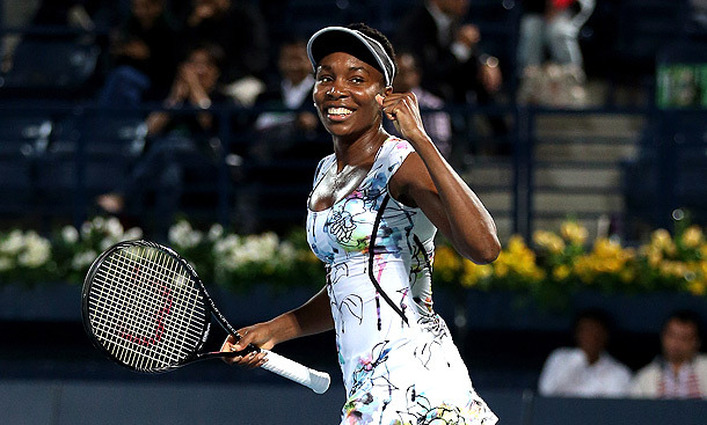








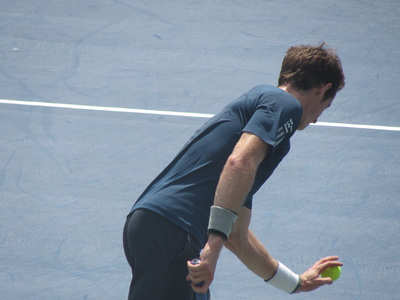
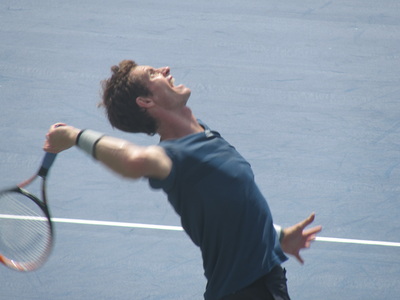
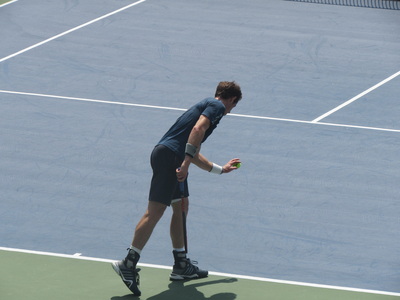




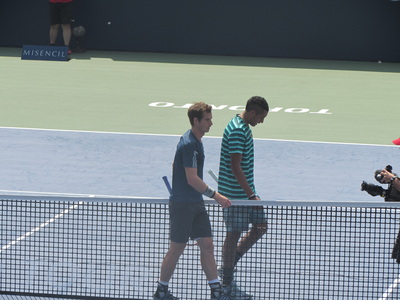




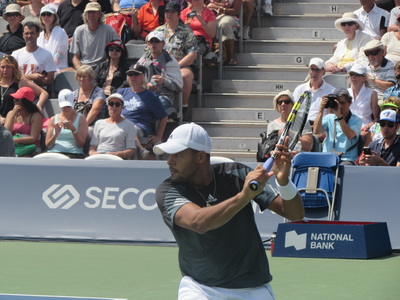
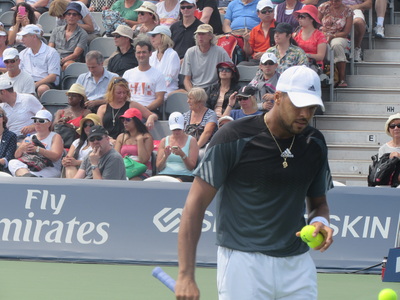







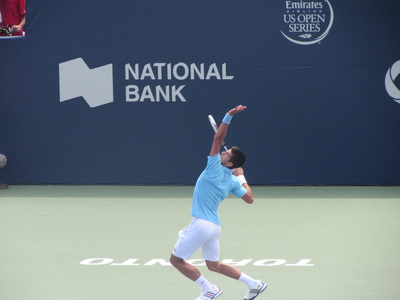
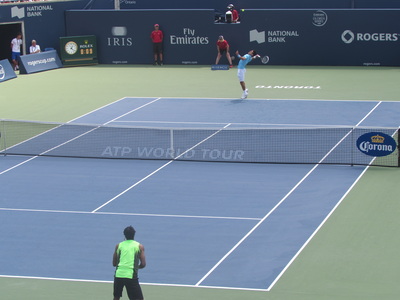
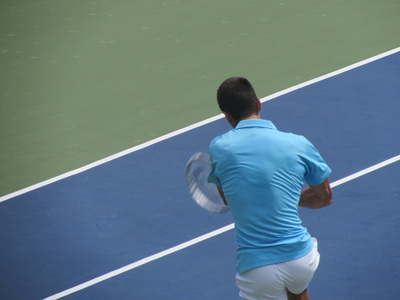


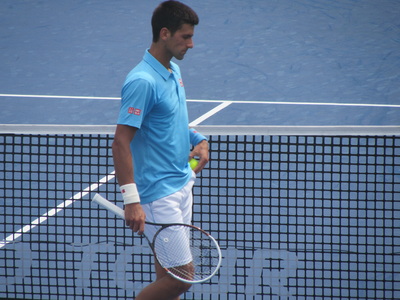


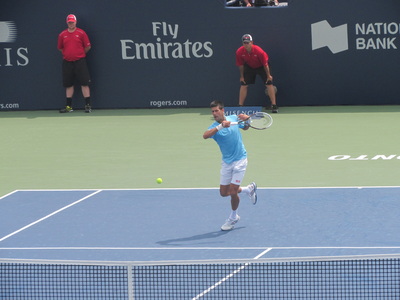
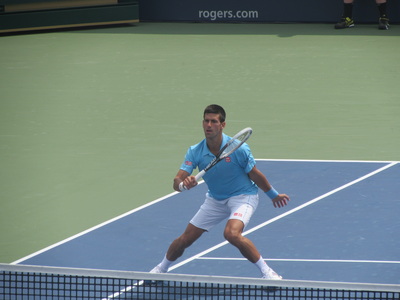

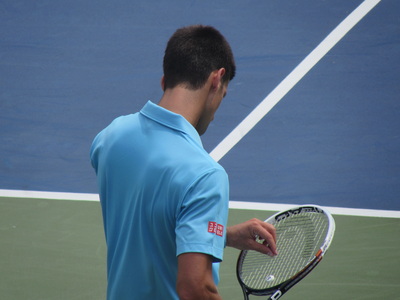

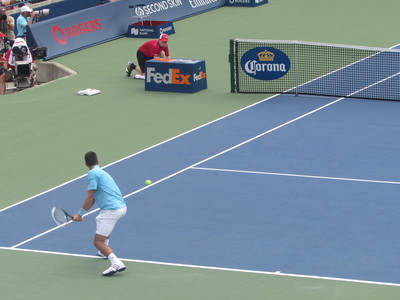
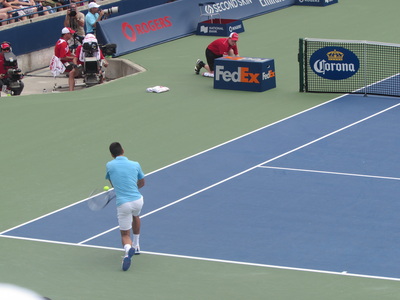




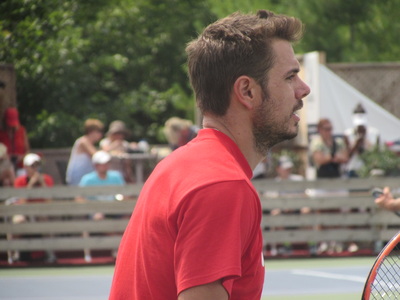
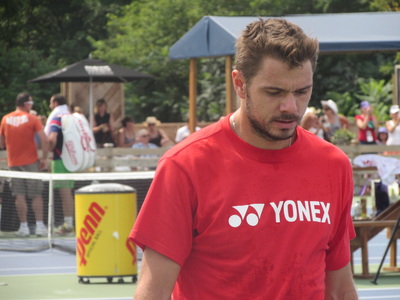


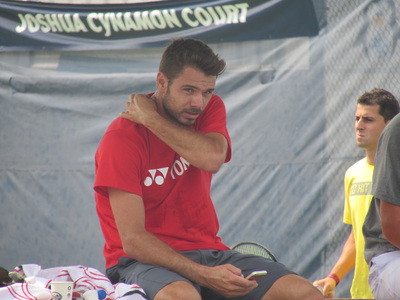




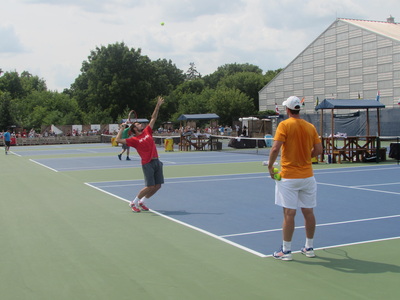

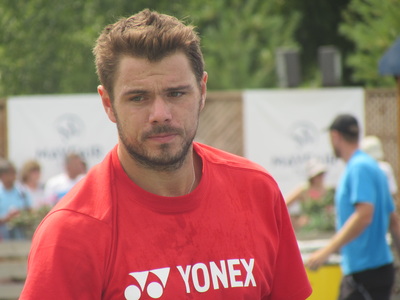

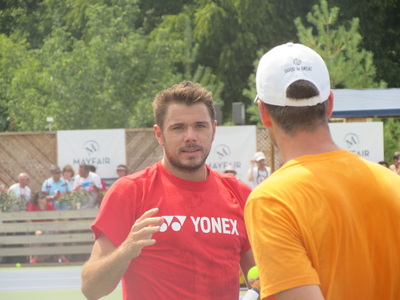
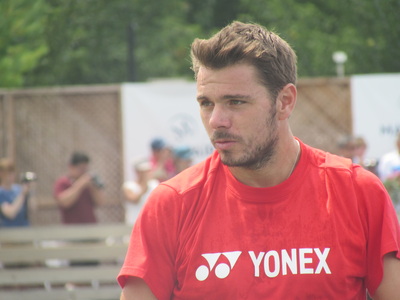


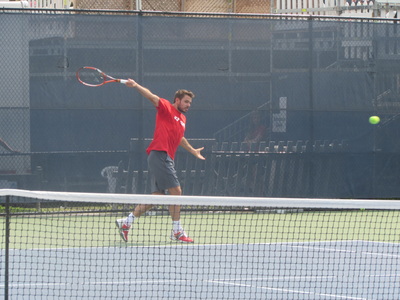

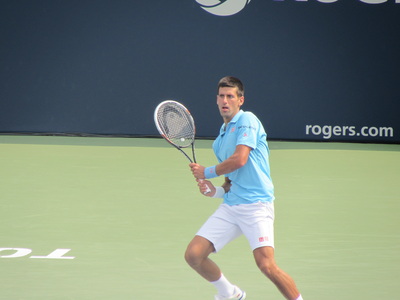

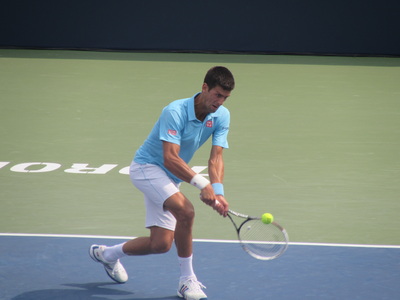





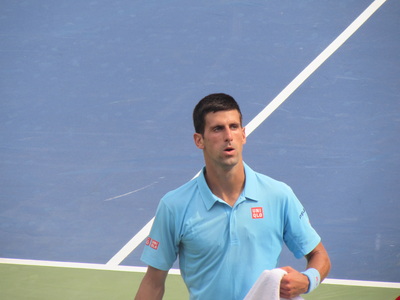
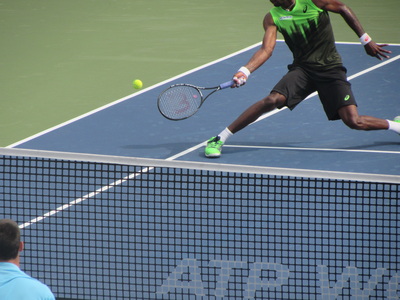

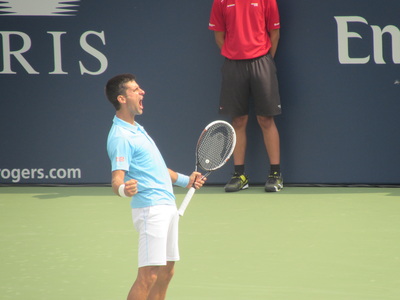
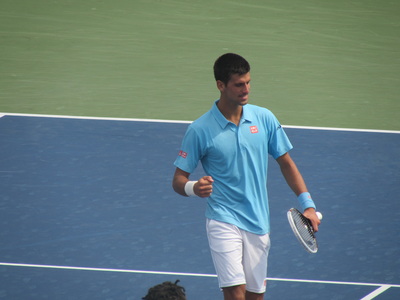



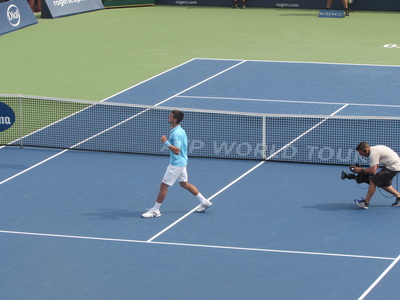
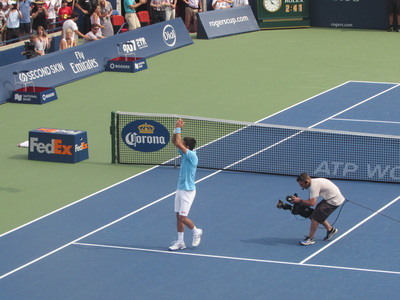



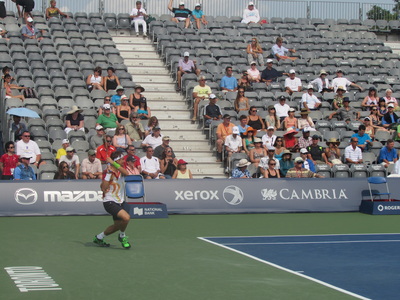
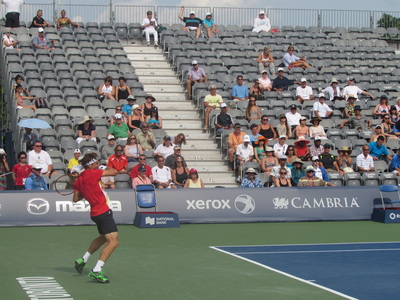


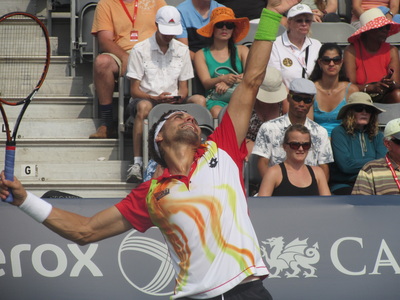

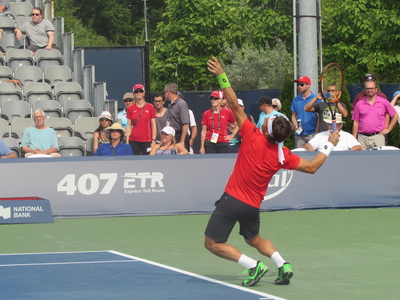
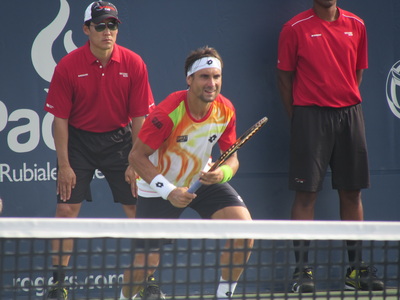
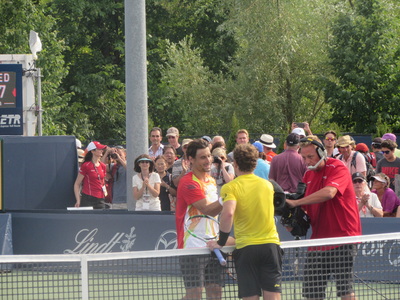
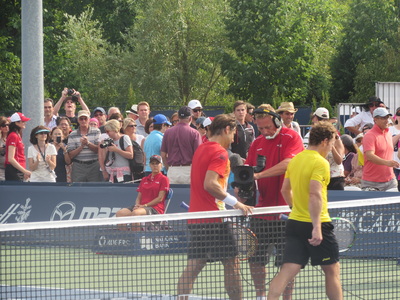



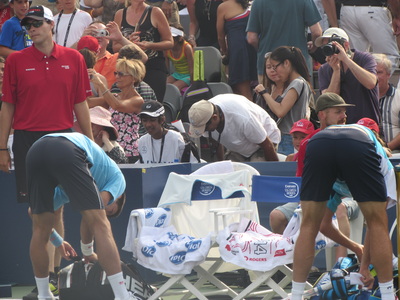


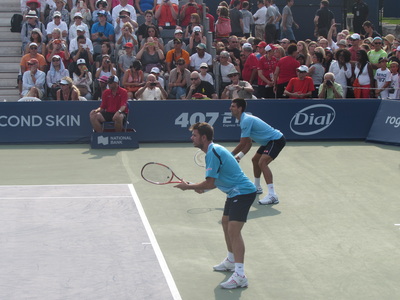


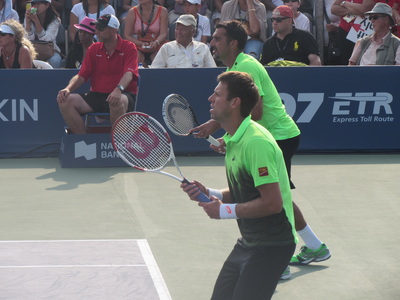

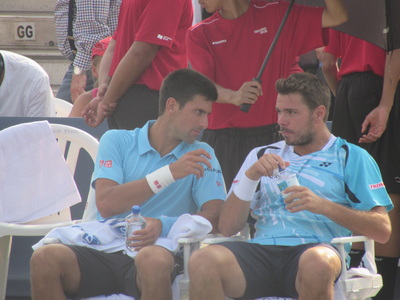


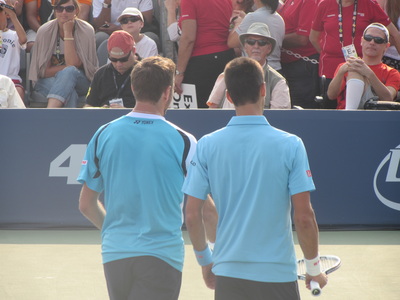


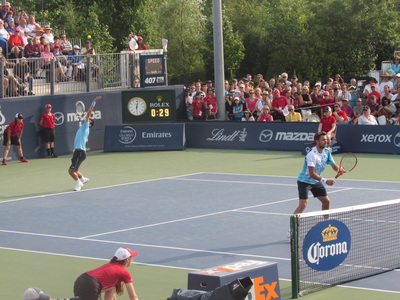
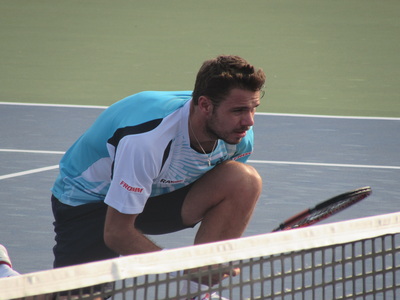

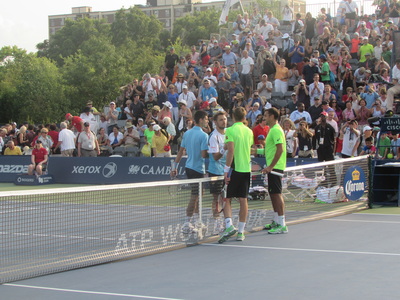

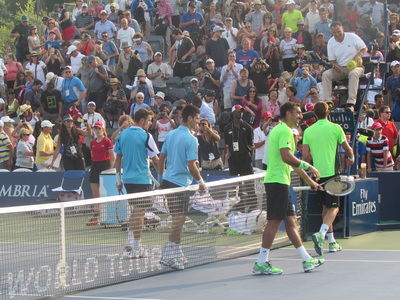





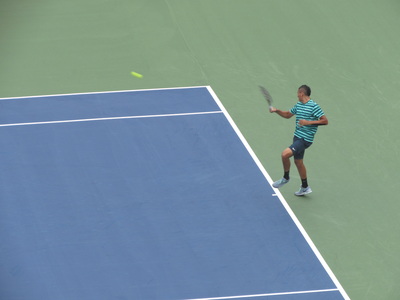

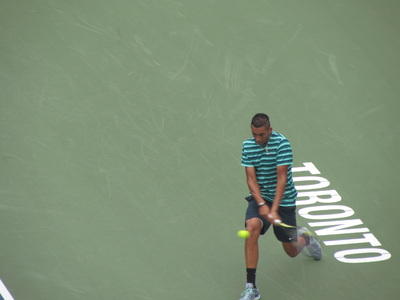
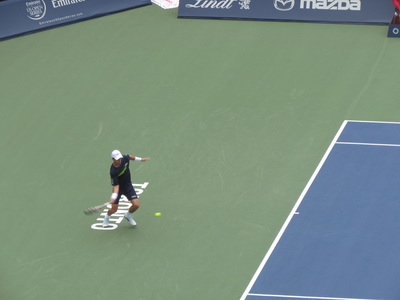

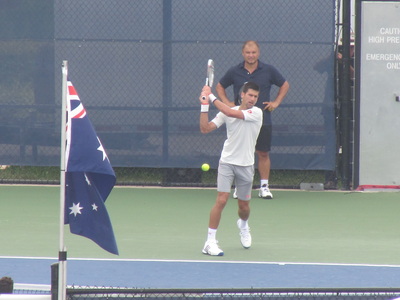



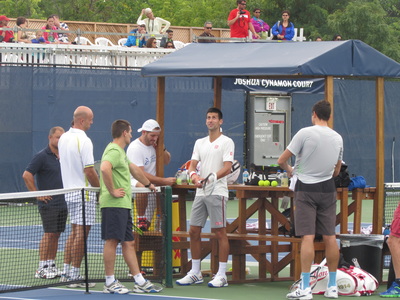
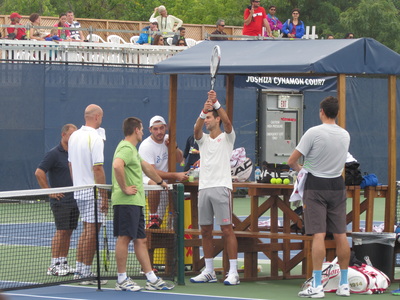




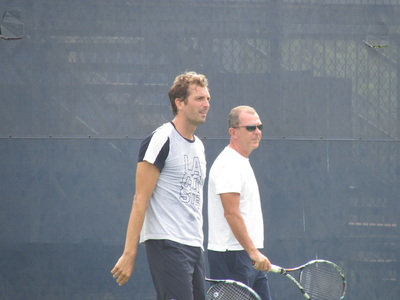
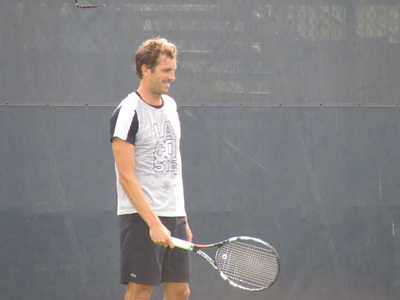
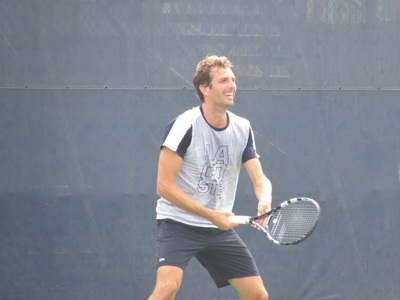
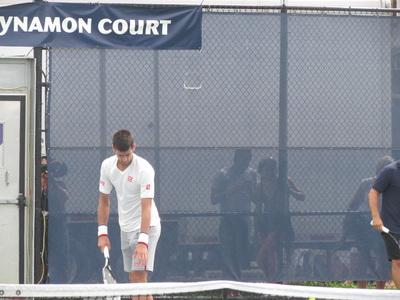




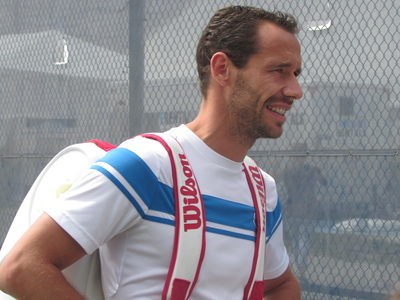
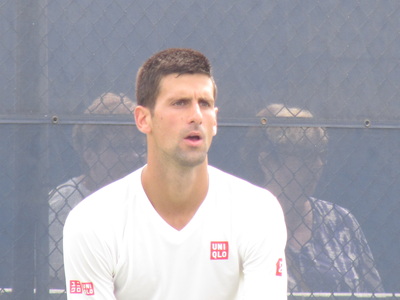

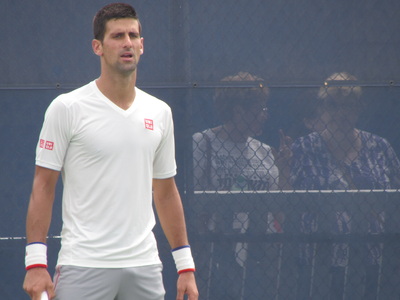

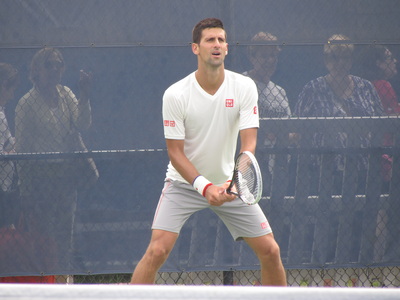

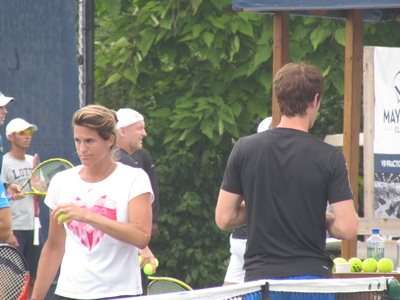




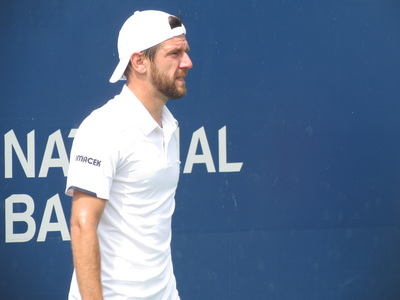
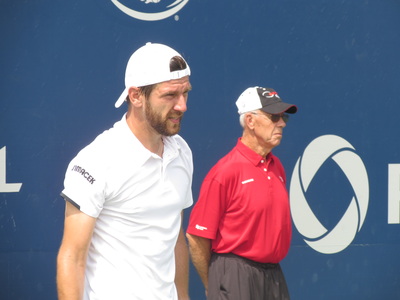
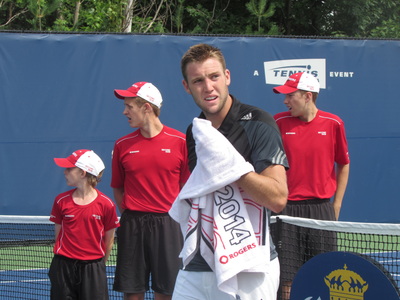
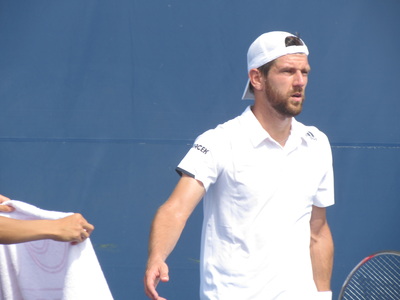


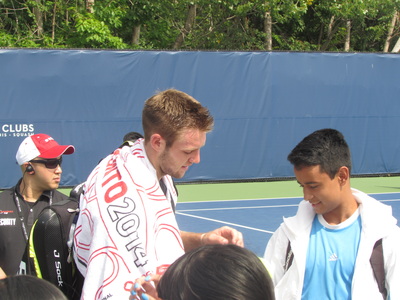





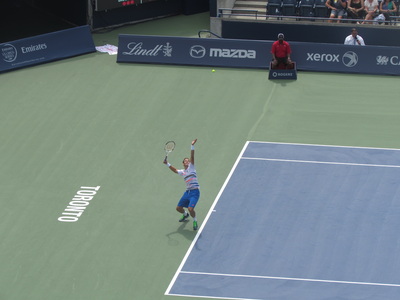


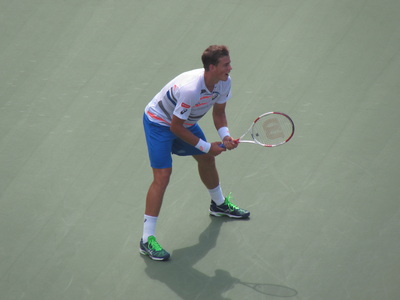

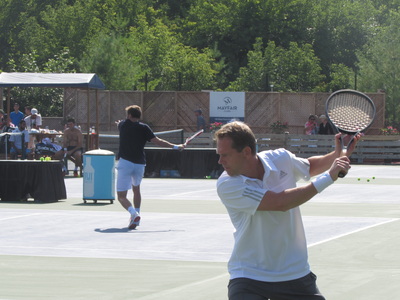


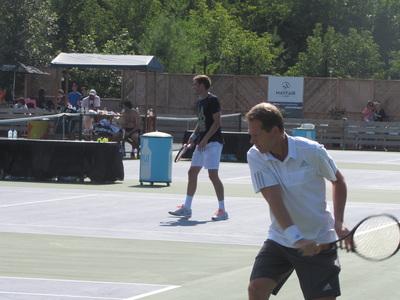
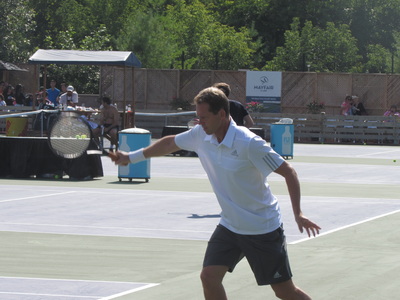
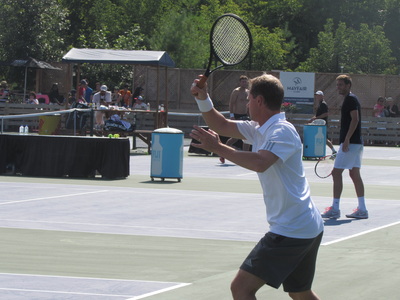
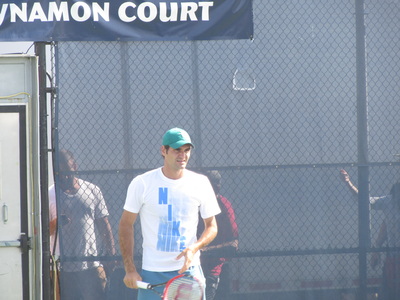
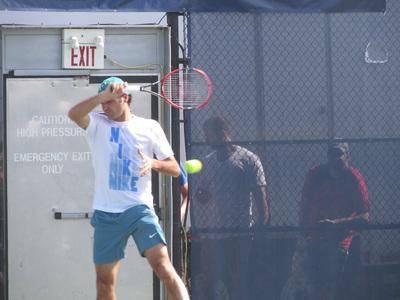


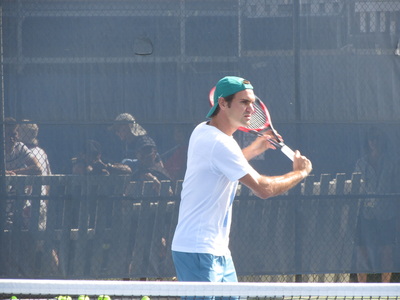
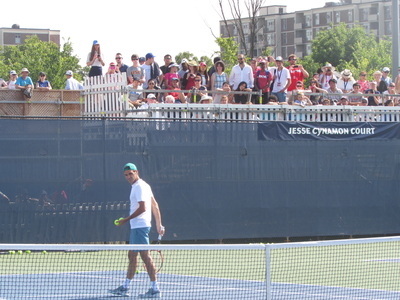
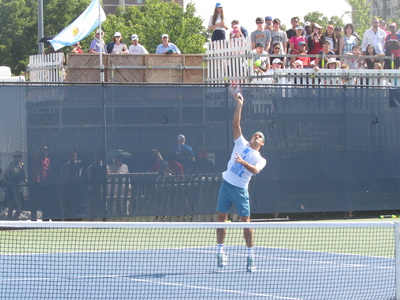



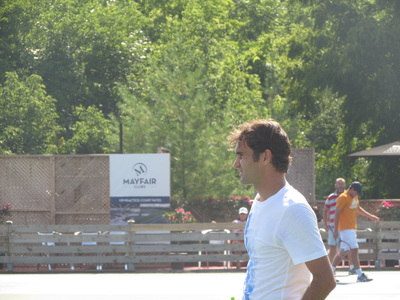

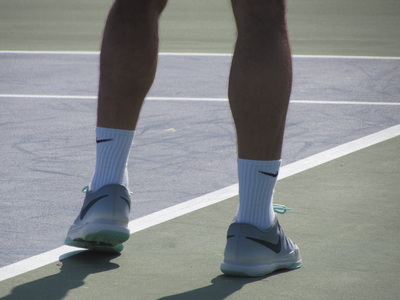
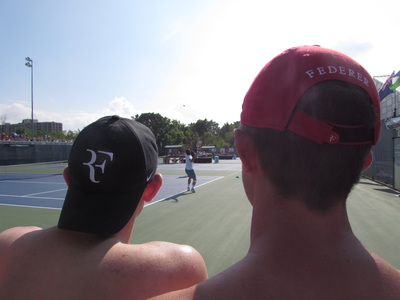







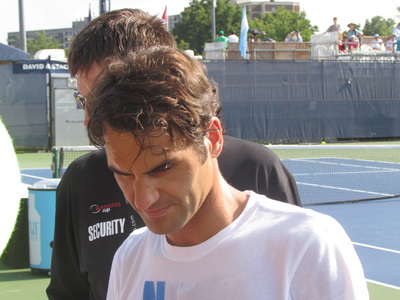
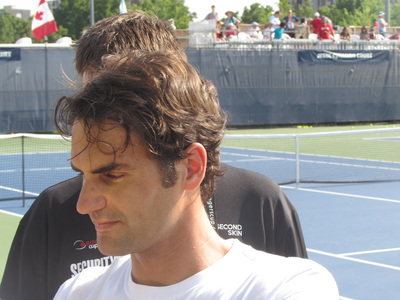
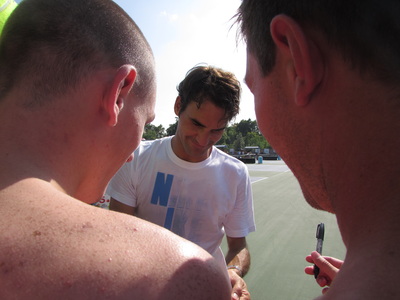
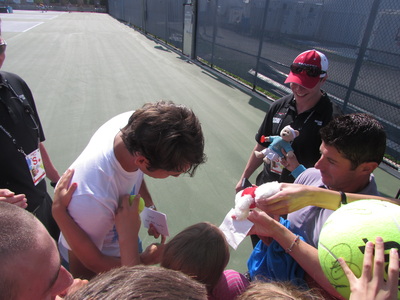





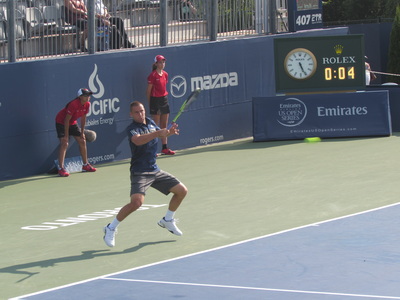


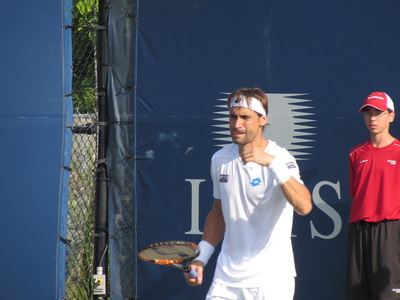
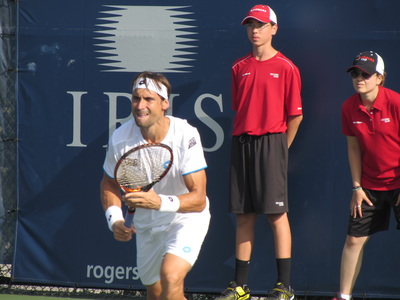


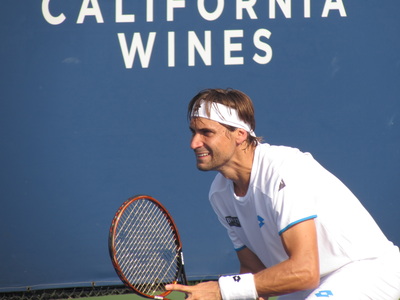
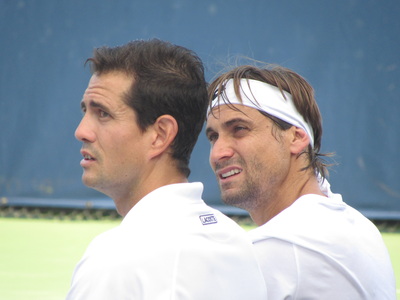



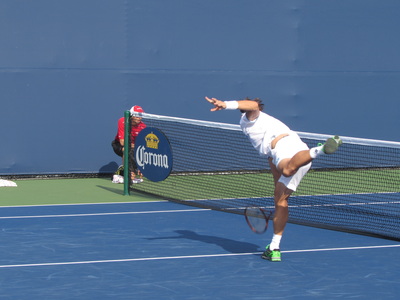
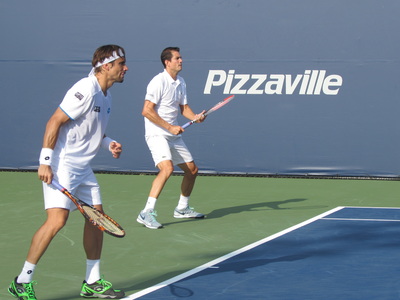

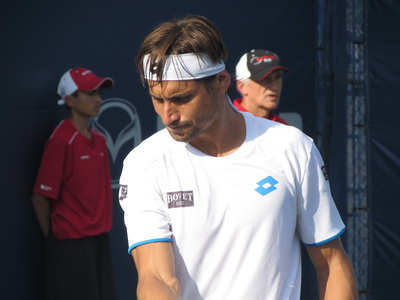

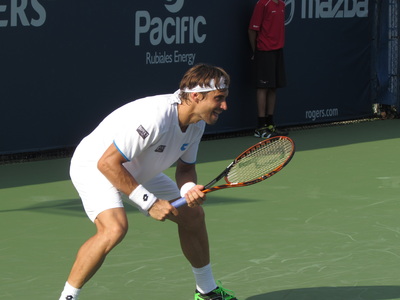



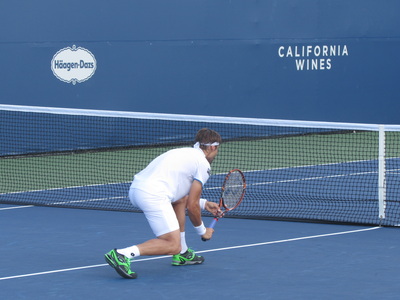

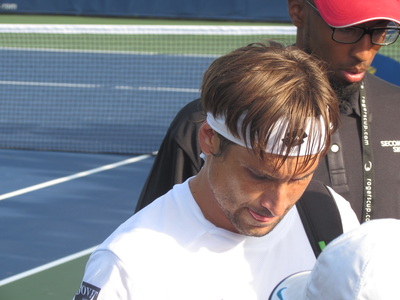

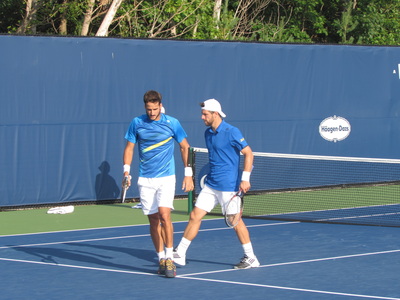
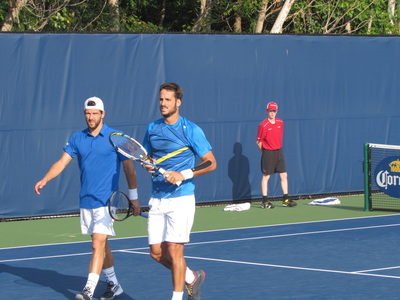

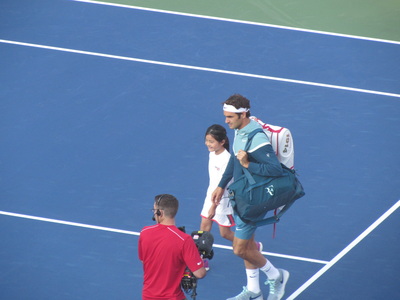
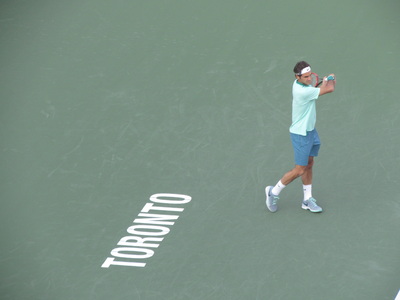

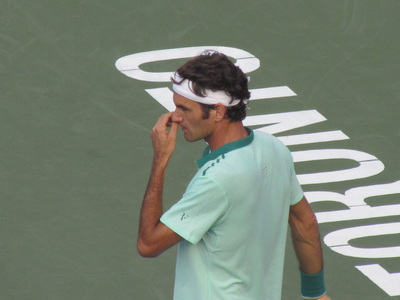
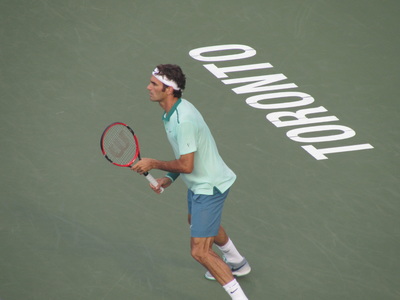
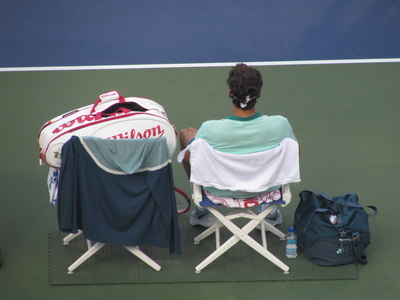
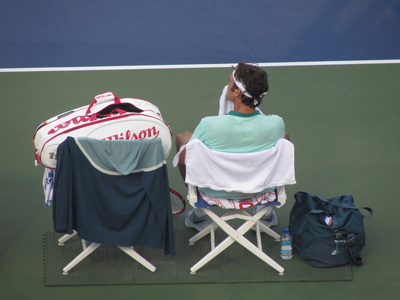
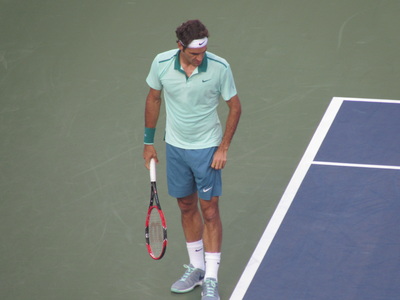



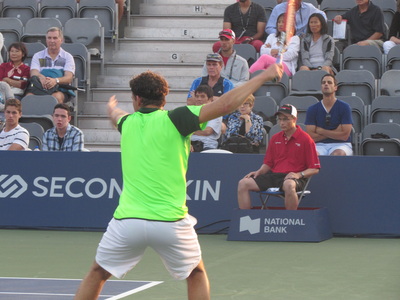





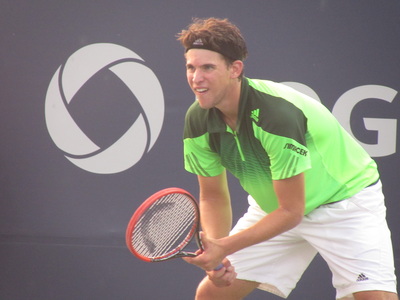

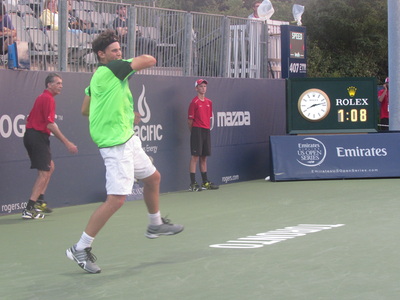
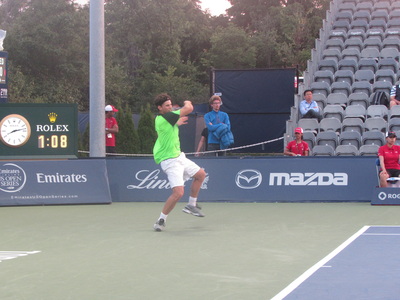
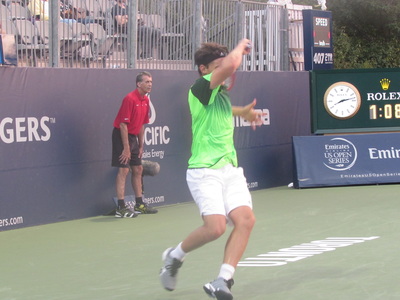
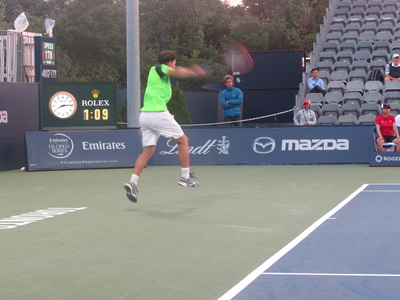
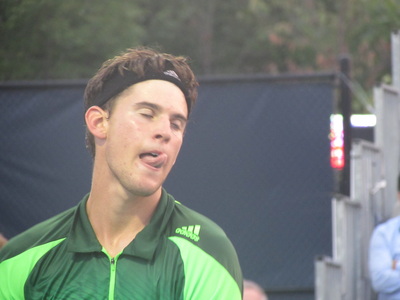



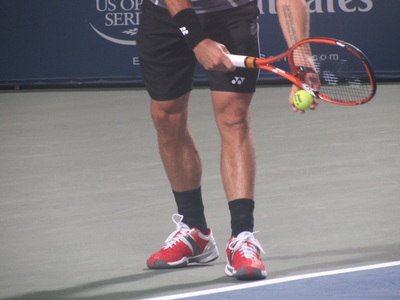


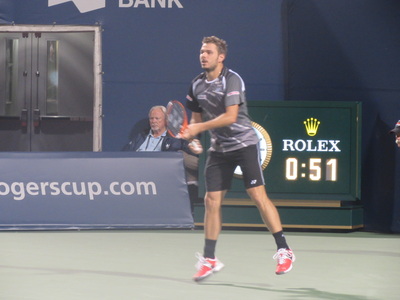
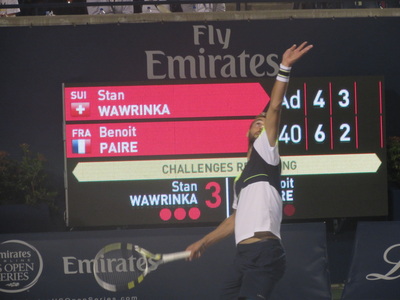
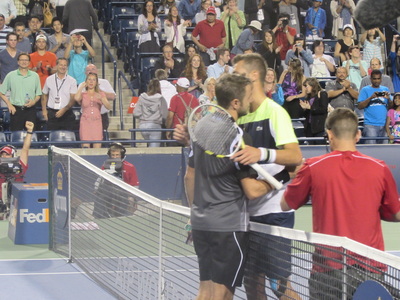
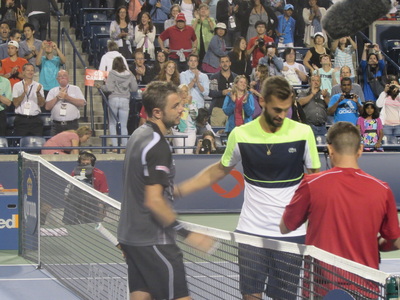
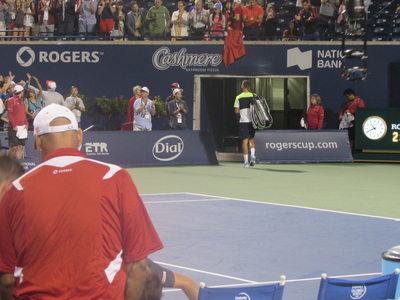
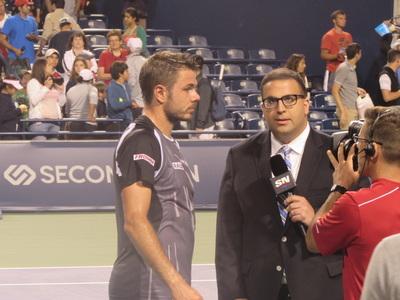
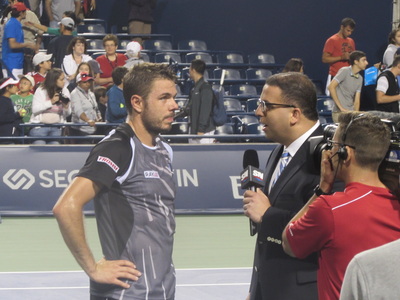


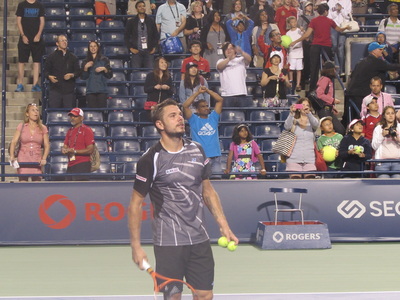


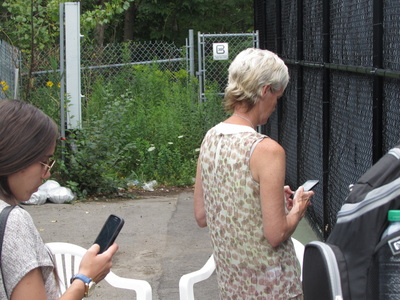



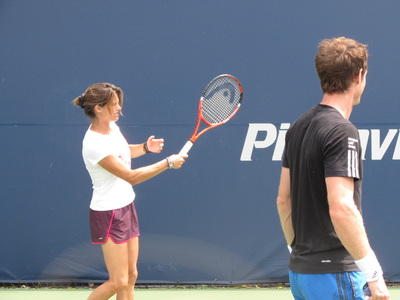
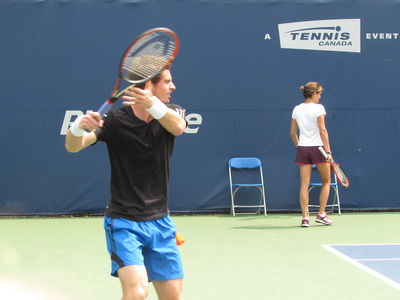

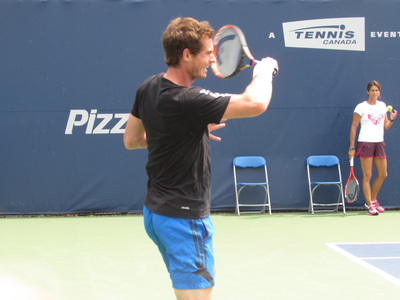

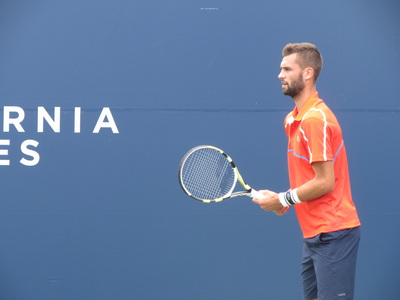


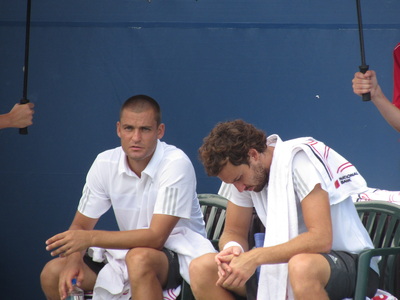

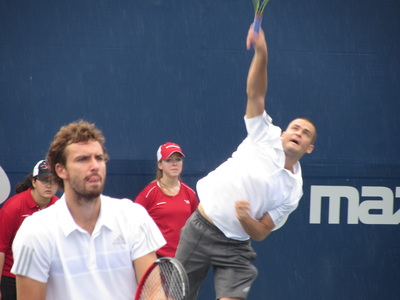
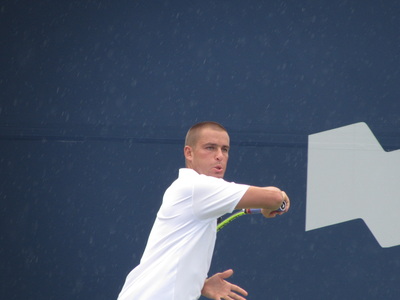
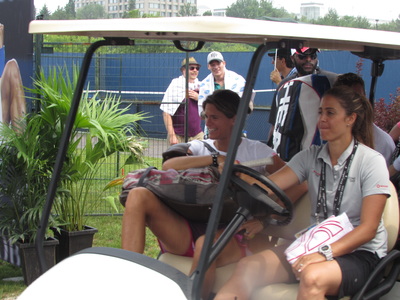


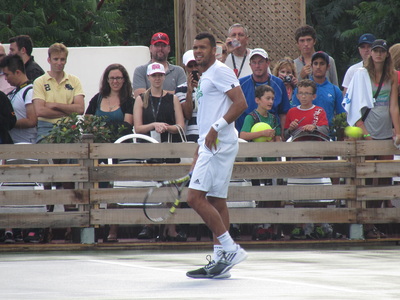
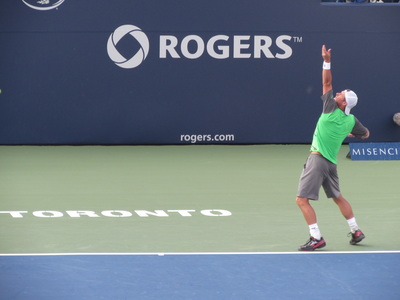

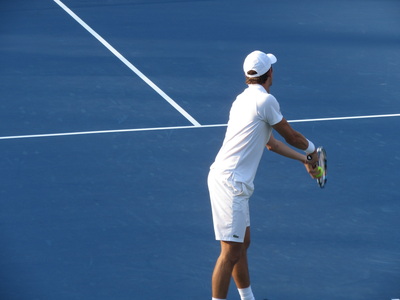

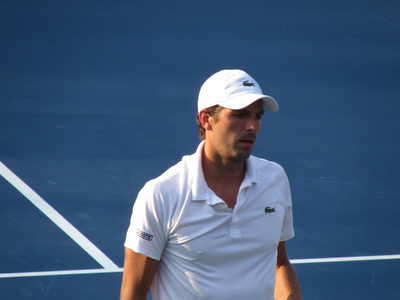





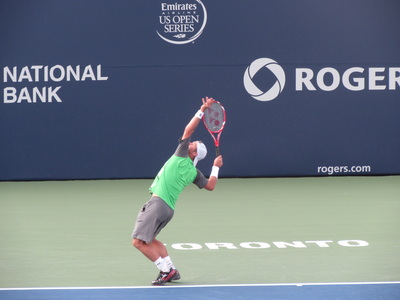
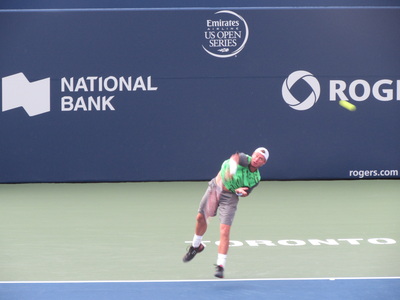
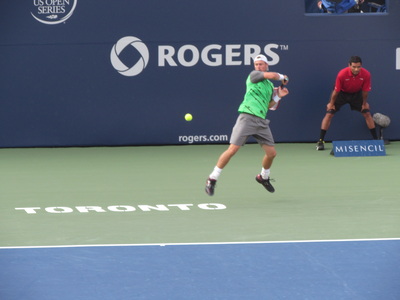
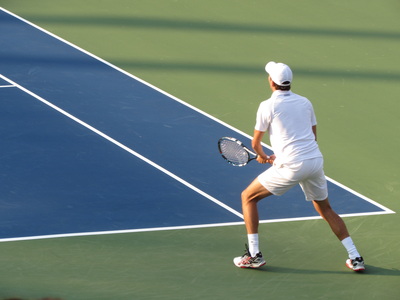




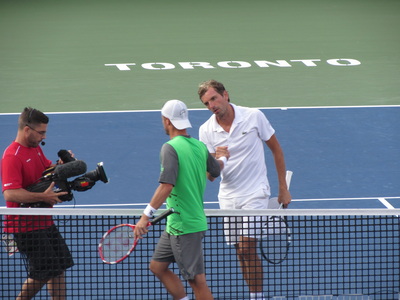


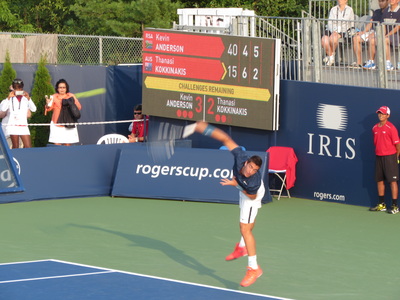
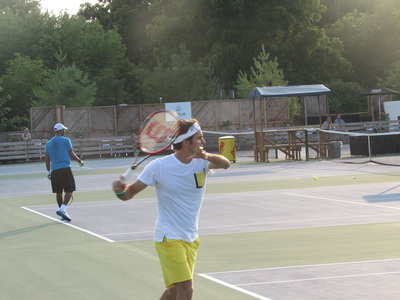
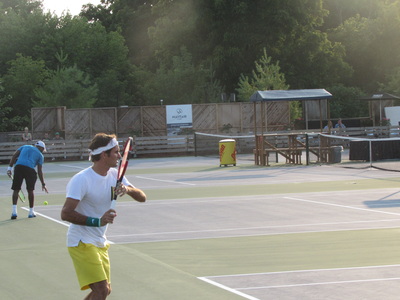
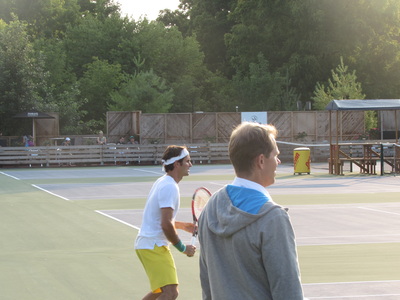
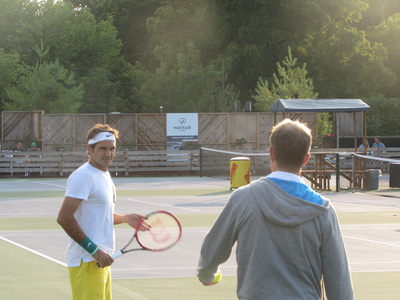
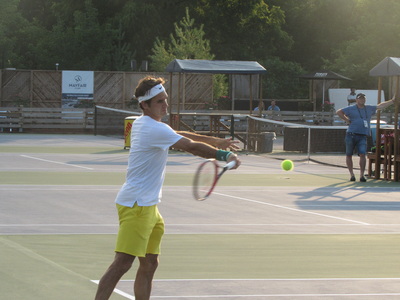

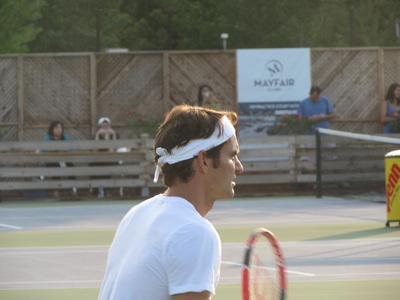


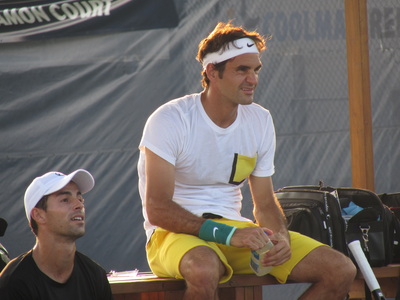



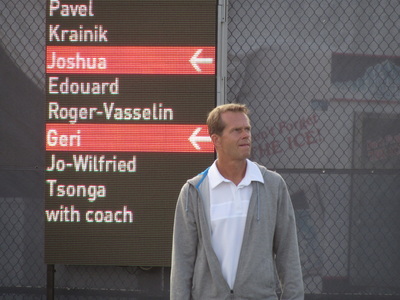



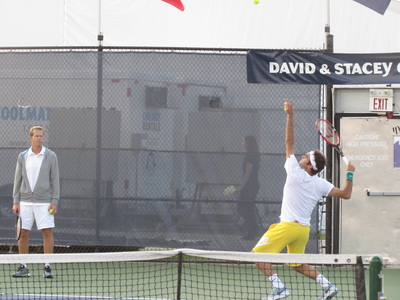
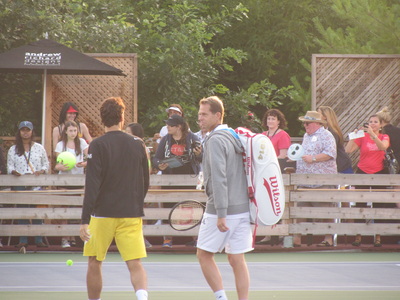


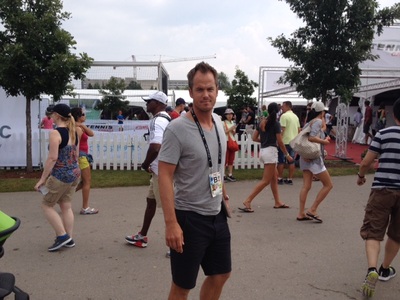
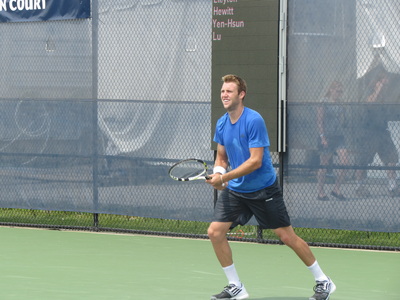
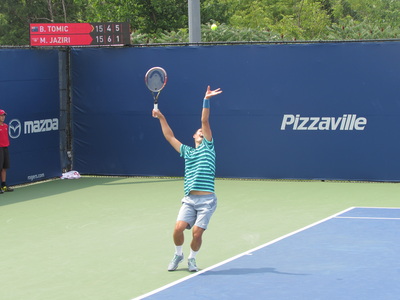

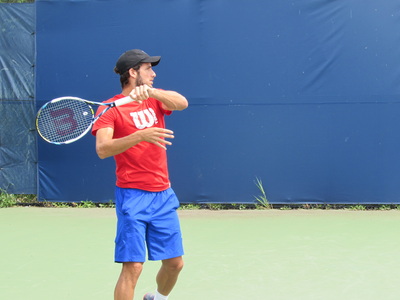
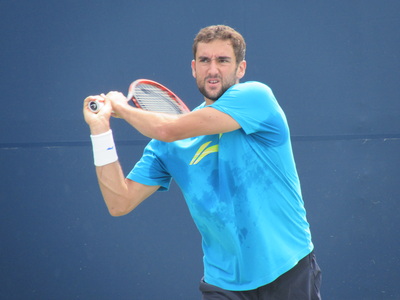


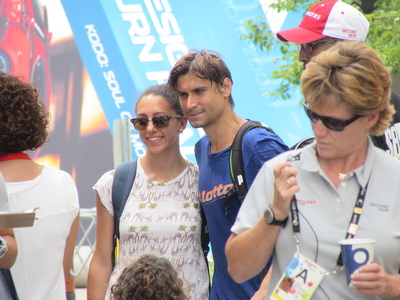


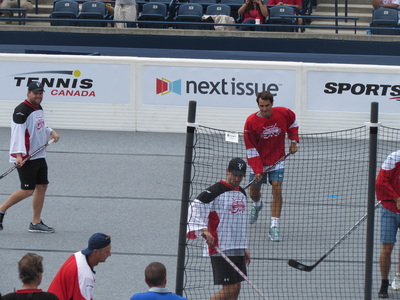
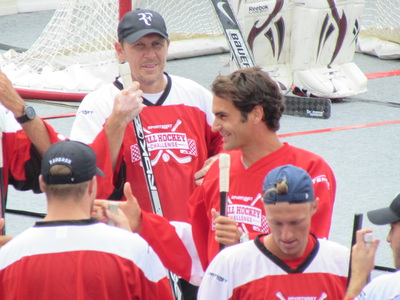






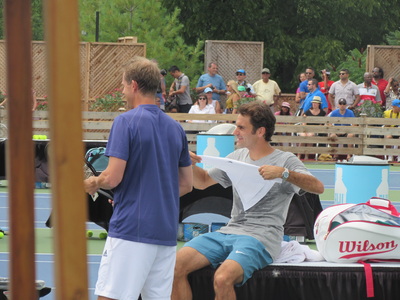



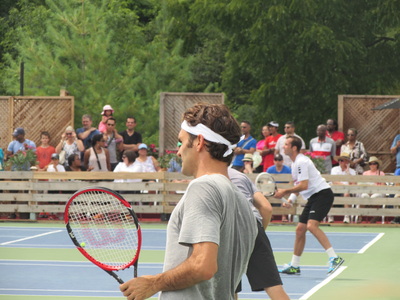
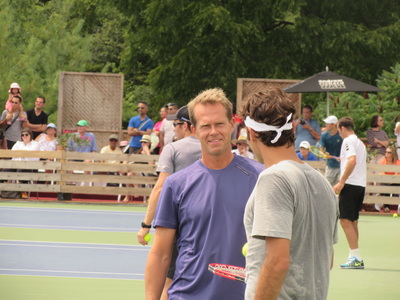

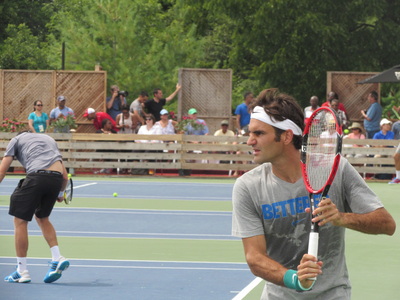

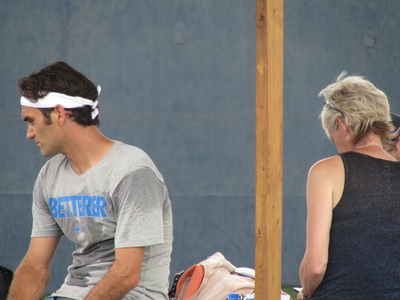

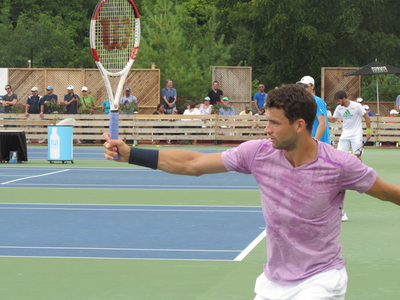

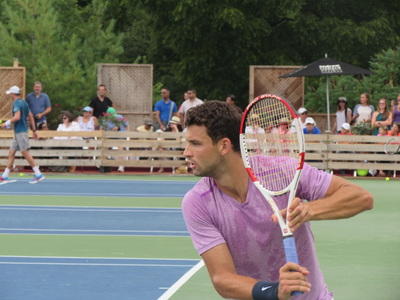
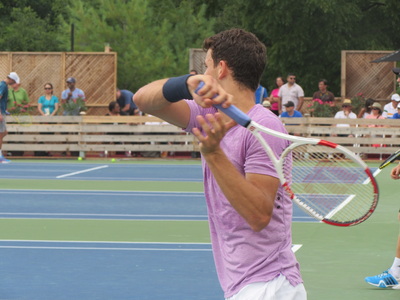

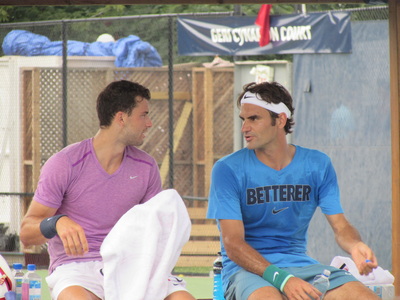


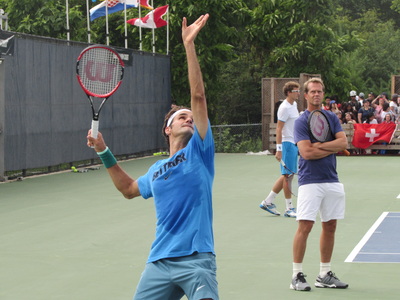


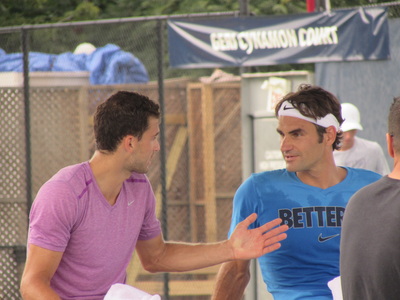
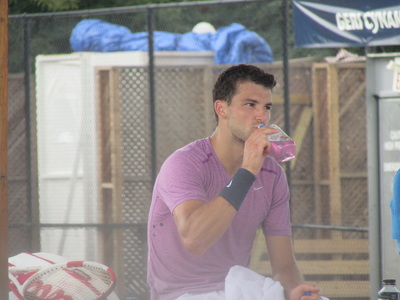



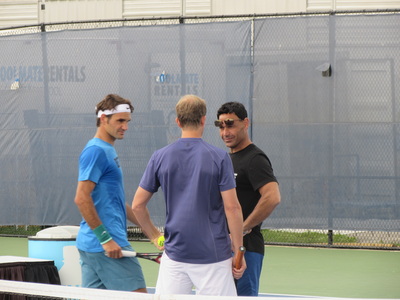
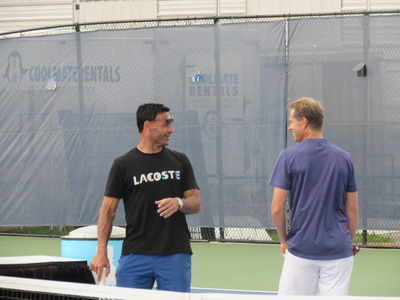



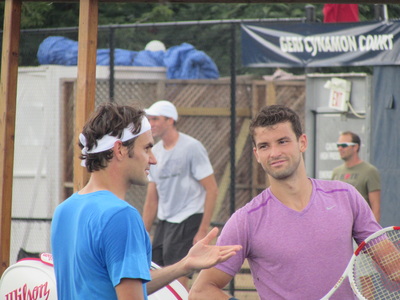

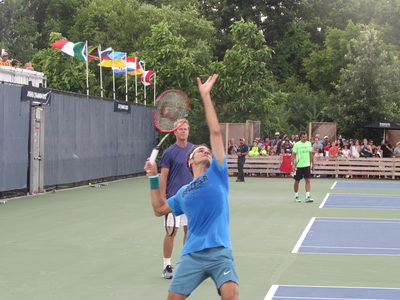







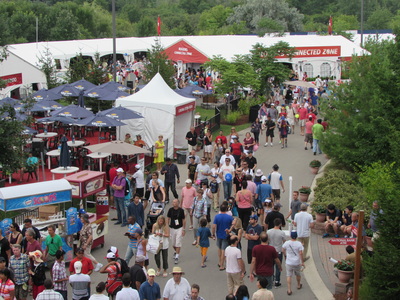

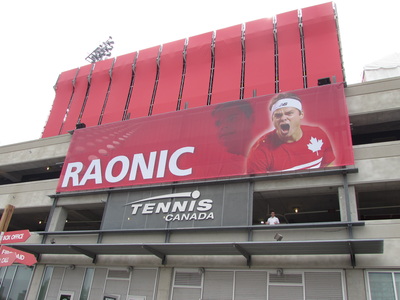
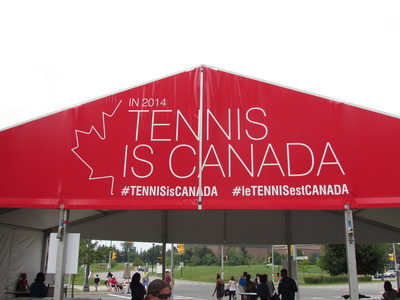


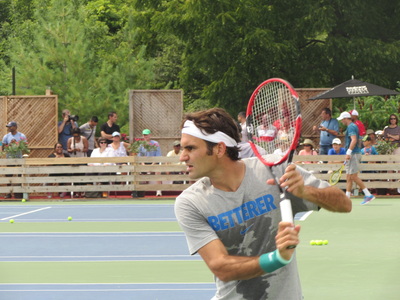


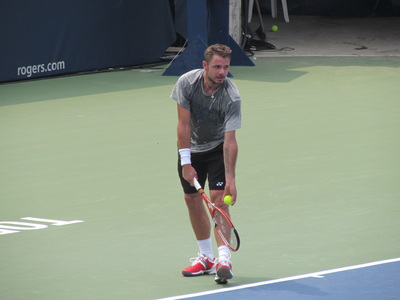
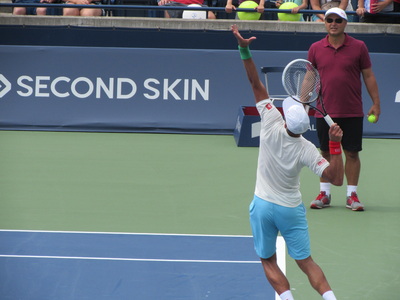

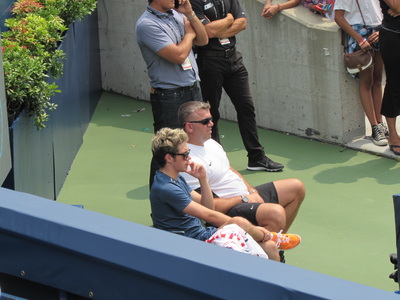




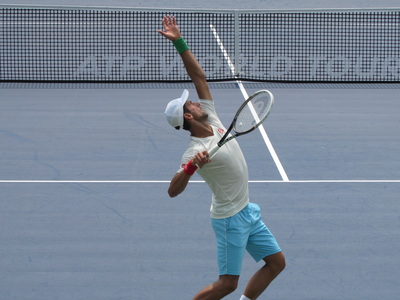

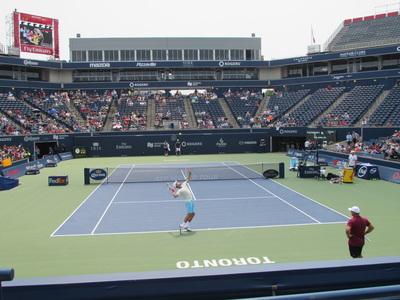

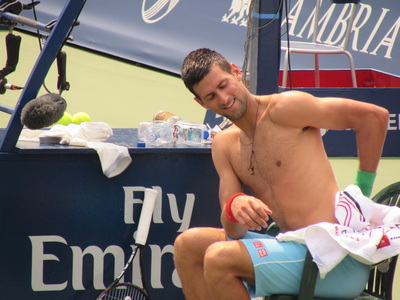

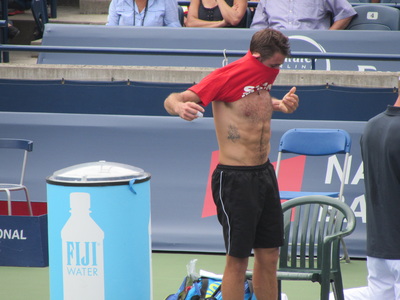

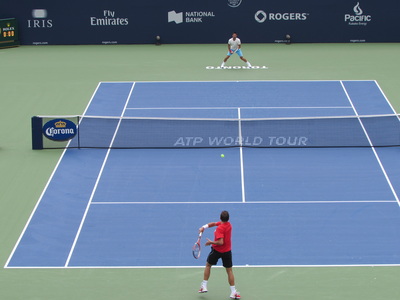
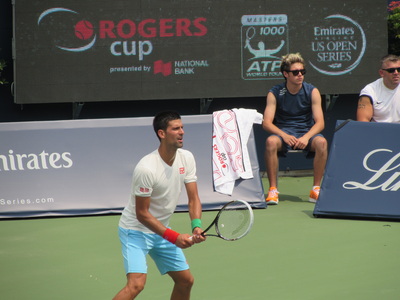
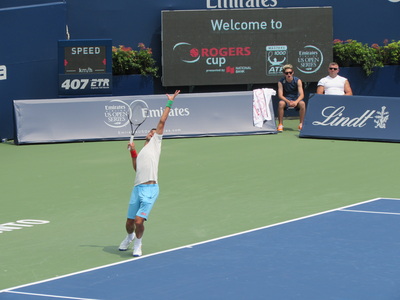
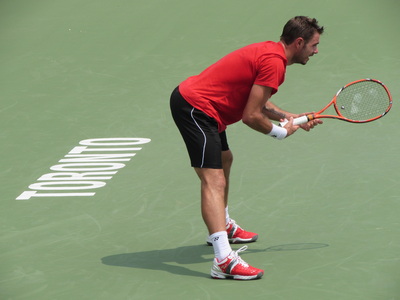




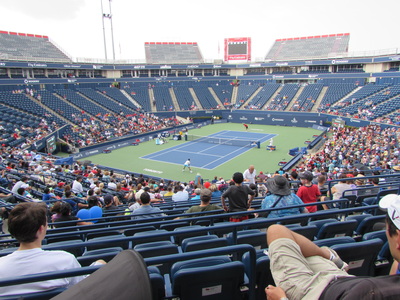
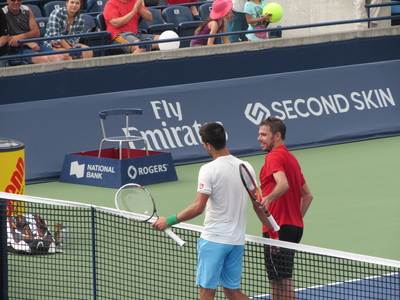
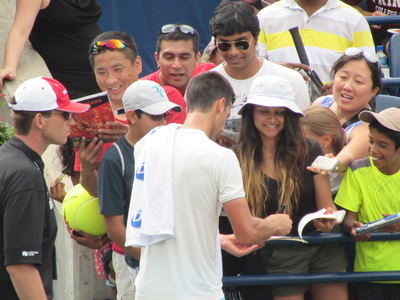


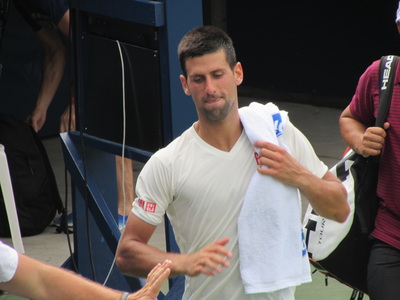
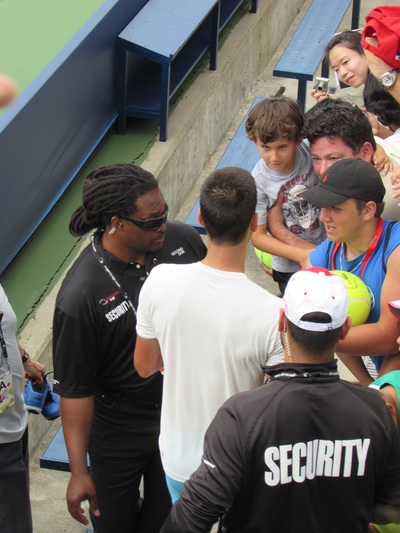



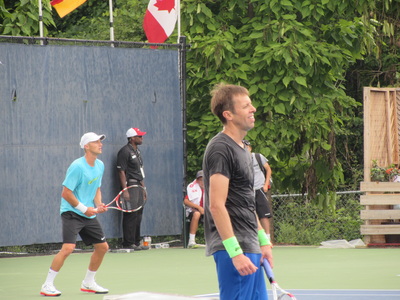

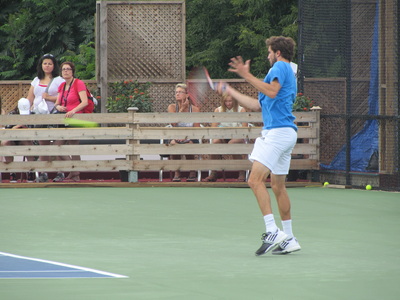

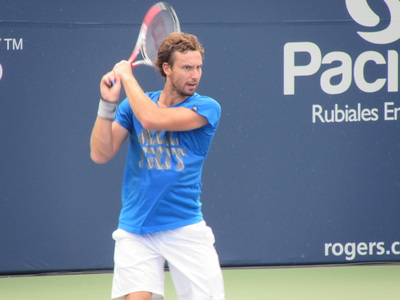
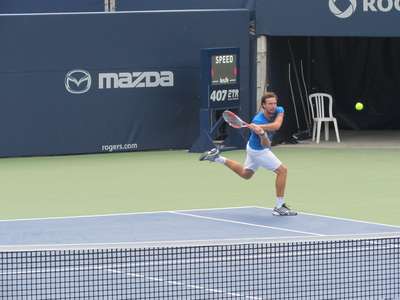
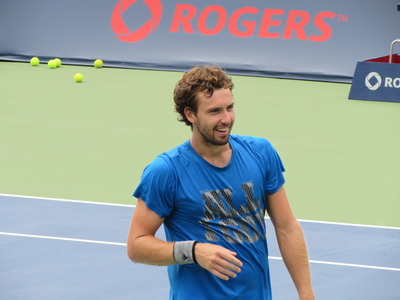
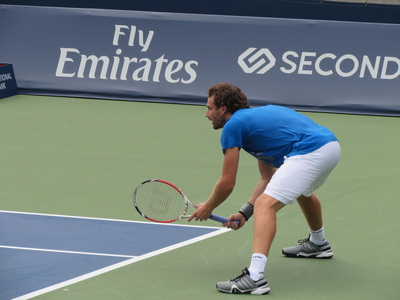

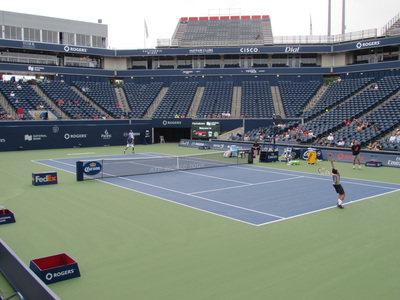

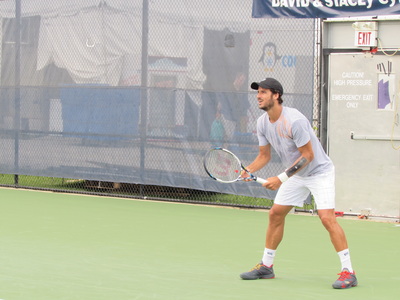
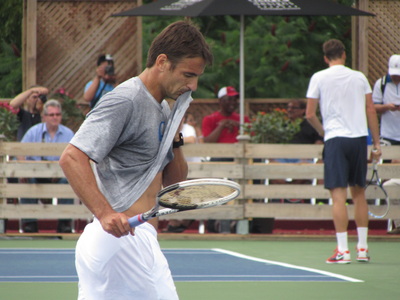





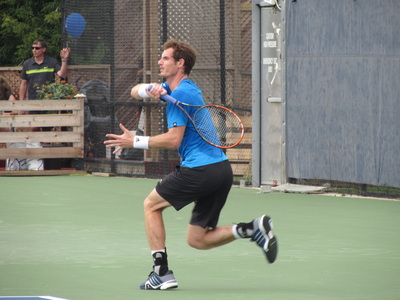
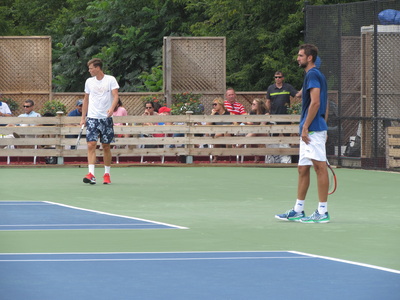



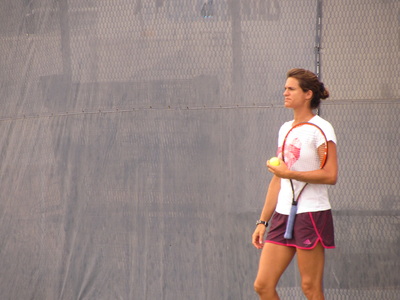



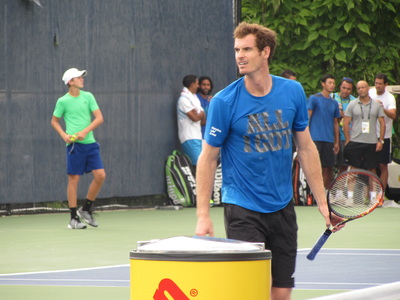

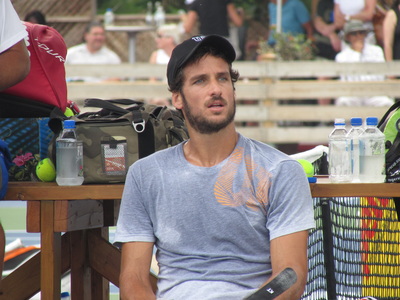
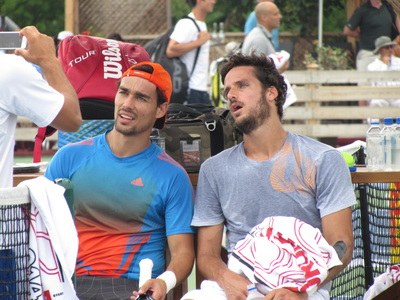


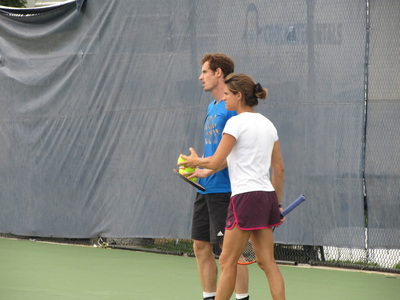
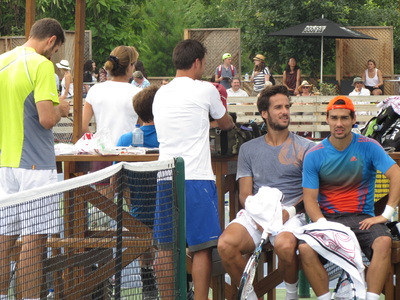

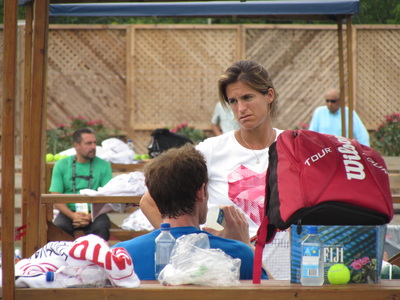

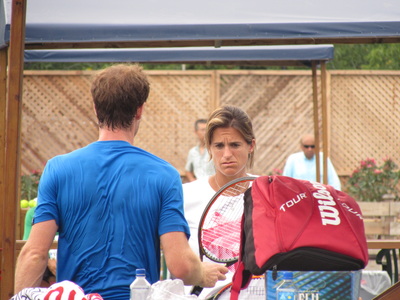

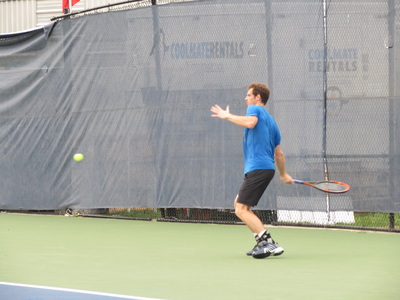

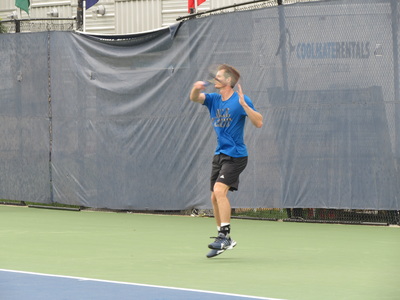
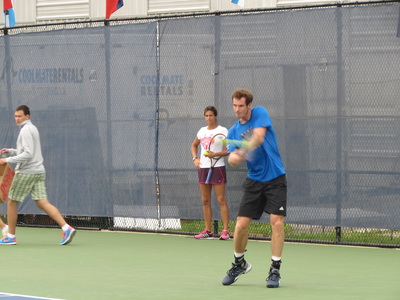


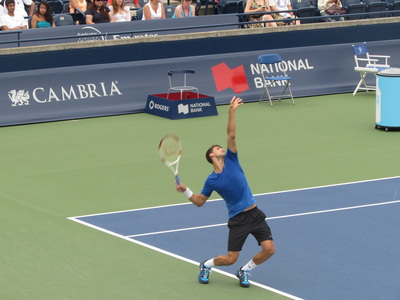




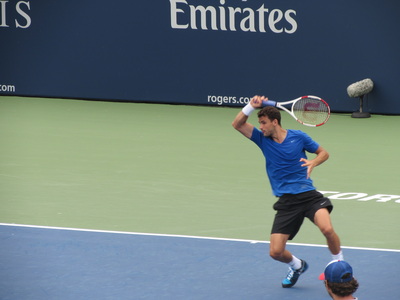

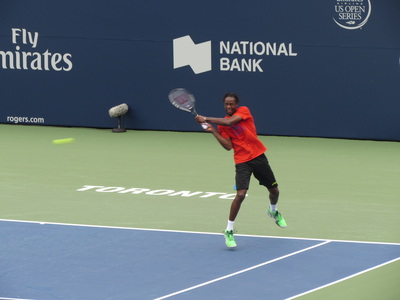

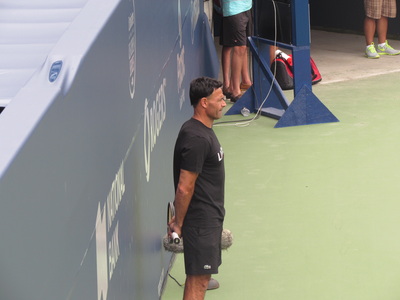



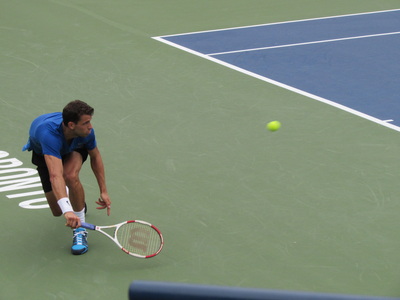

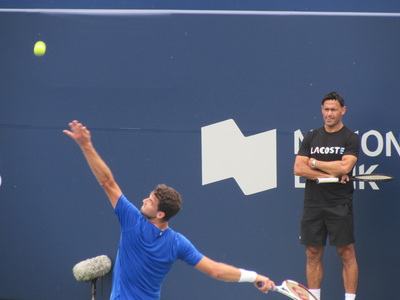
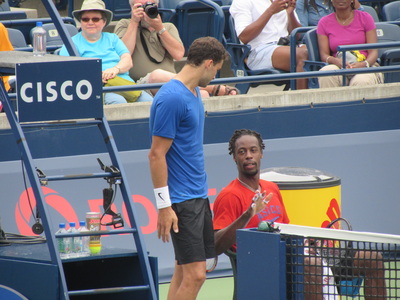
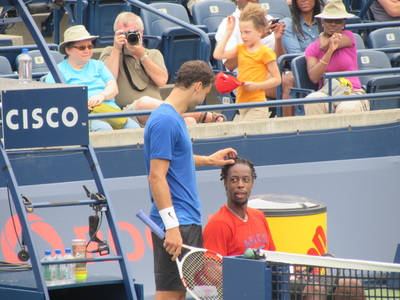

 RSS Feed
RSS Feed